Corcovado National Park Wildlife Encounters are possible and almost unavoidable. Embark on an epic adventure through Corcovado National Park! Witness the incredible biodiversity and encounter exotic wildlife like howler monkeys, scarlet macaws, and jaguars.
#EpicAdventuresCostaRica #CorcovadoWildlife #NatureLovers #ExploreCostaRica
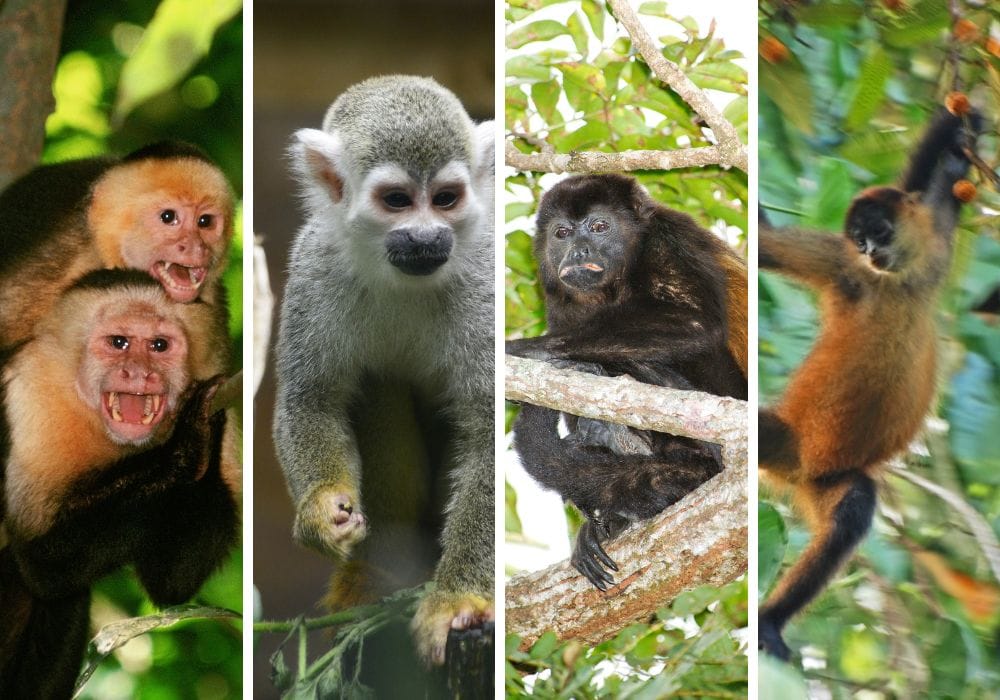
Introduction
Located on the Osa Peninsula in Costa Rica, Corcovado National Park is a biodiverse paradise that boasts lush rainforests, pristine beaches, and abundant wildlife. As one of the most ecologically diverse regions in the world, visitors to the park can expect to encounter a wide variety of exotic animals in their natural habitat.
Home to over 500 species of birds, 140 species of mammals, and countless reptiles and amphibians, Corcovado National Park is a must-visit destination for nature enthusiasts looking to immerse themselves in the wonders of the rainforest. With its reputation for incredible biodiversity, the park offers unparalleled opportunities for unforgettable wildlife encounters.
Given the threats facing many of the species within the park, such as habitat loss and poaching, wildlife conservation efforts in Corcovado are crucial to preserving this unique ecosystem for future generations to enjoy. By supporting initiatives aimed at protecting the flora and fauna of the park, visitors can contribute to the long-term sustainability of this valuable natural resource.
1. Howler Monkeys
Howler monkeys are one of the most iconic species found in Corcovado National Park, known for their distinctive loud calls that can be heard from miles away. These primates play a crucial role in the ecosystem as seed dispersers, helping to maintain the balance of plant life within the park.
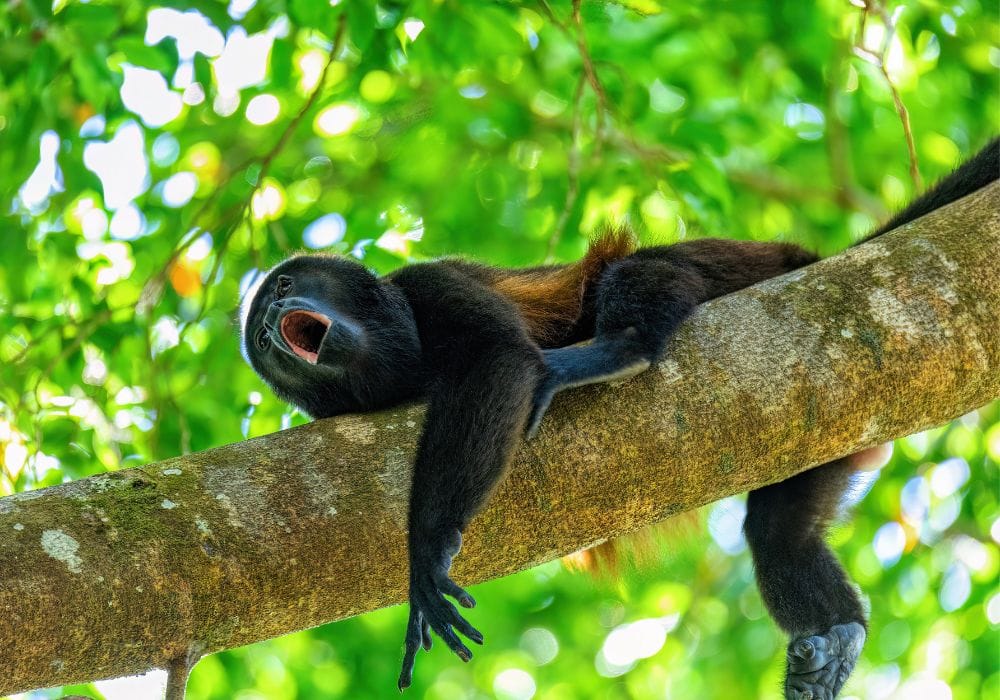
– Best times and locations to spot them: Howler monkeys are most commonly spotted in the early morning or late afternoon when they are most active. The best locations to see them in Corcovado National Park are along the park’s extensive trail system, particularly near trees with new leaves where they often gather to feed.
The sounds of the howlers can scare off visitors, as they are as loud as we imagine a dragon to be. The faces of people hearing them for the first time in awe is a beautiful gift for us at Epic Adventures.
2. Spider Monkeys
Among the Corcovado National Park wildlife, you will find spider monkeys known for their ability to use their tails as an extra limb, providing them with exceptional agility in the treetops. Spider monkeys are also highly social animals, often seen traveling in large groups through the canopy of the rainforest. Their long limbs and prehensile tails make them well-adapted for life in the trees, where they spend most of their time foraging for food.
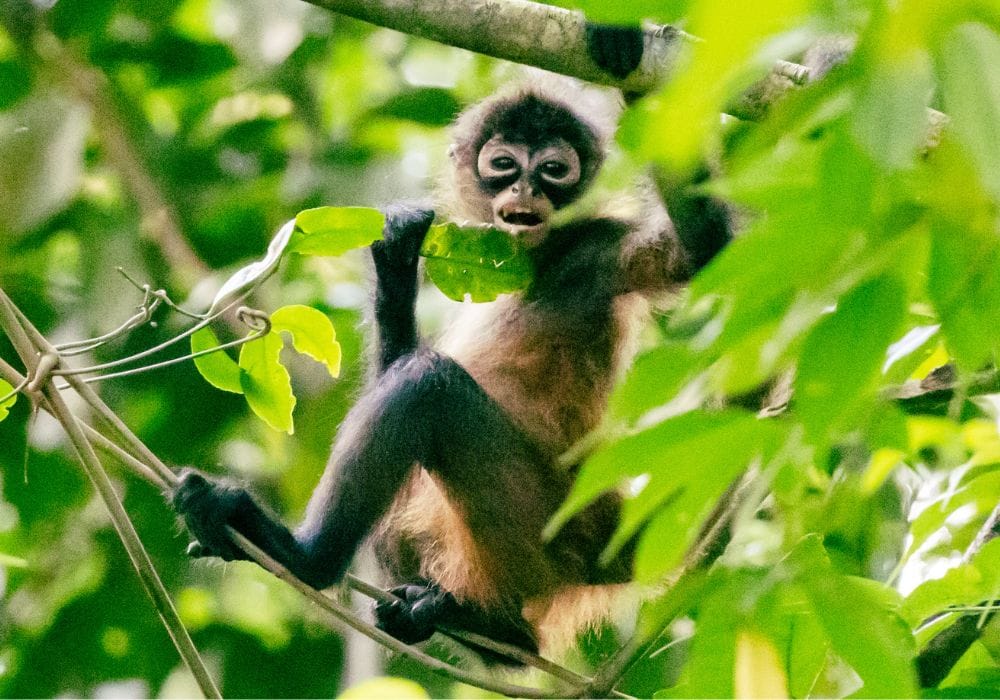
– Best times and locations to spot them: When searching for spider monkeys in the park, it is best to look for areas with dense tree cover and a variety of fruit-bearing trees, as these are their preferred habitats. Additionally, listening for their distinctive vocalizations, such as loud calls and hoots, can help guide you to their location within the canopy.
Observing spider monkeys interact in their natural habitat provides a fascinating glimpse into their social dynamics and impressive agility. Witnessing their acrobatic leaps and swings through the forest canopy is truly a memorable experience.
3. Capuchin Monkeys
Capuchin monkeys are easily recognizable by their distinctive black and white coloring and expressive faces. Known for their intelligence and curiosity, these playful primates are often seen using tools and interacting with their surroundings.
– Best times and locations to spot them: Capuchin monkeys are commonly found in the lowland rainforests and along riverbanks. They are active throughout the day, making them relatively easy to spot on guided tours.
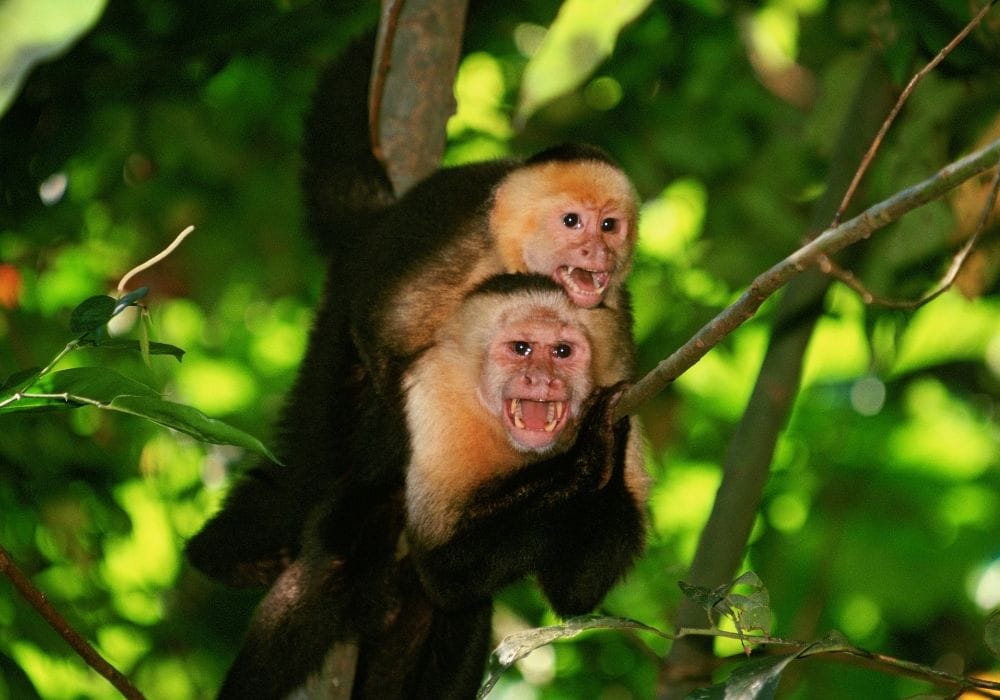
– Interaction stories: Watching capuchin monkeys in action can be a delightful experience, as they are known for their playful antics and clever behaviors. Probably the most usual stories regarding white faced monkeys are about how they steal food from travelers, even from their backpacks. They are very smart and will go for anything they think has food.
4. Squirrel Monkeys
Squirrel monkeys are the smallest of the monkey species found in Corcovado National Park. They are highly social and energetic, often seen in large troops foraging for food in the lower canopy.
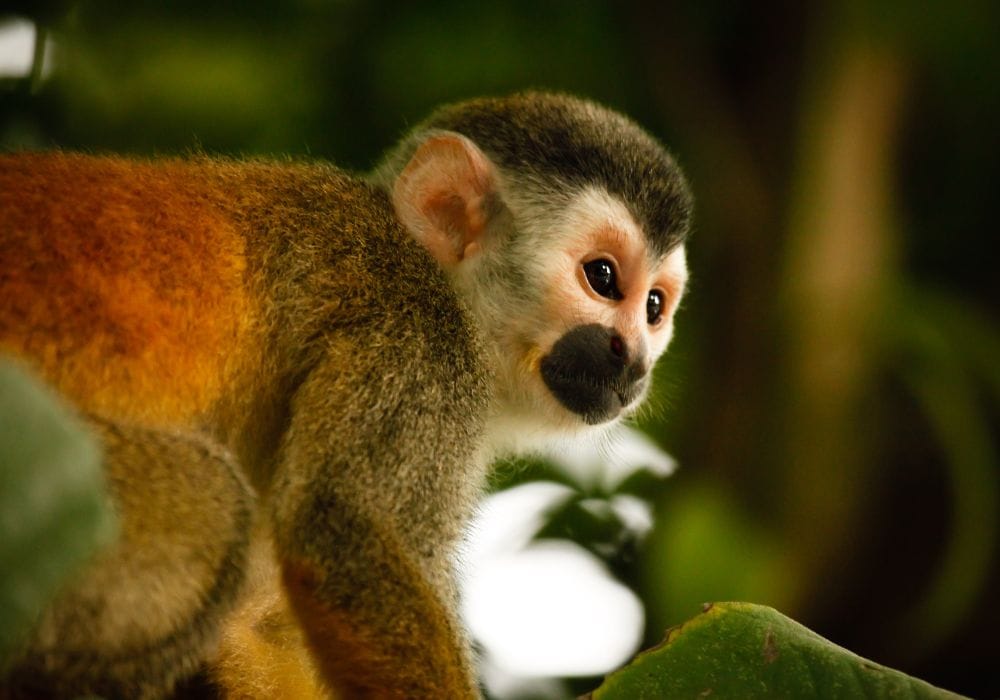
– Prime spotting areas: Squirrel monkeys prefer habitats with dense vegetation and are often found near streams and rivers. Early morning and late afternoon are the best times to observe their lively behavior.
Tour guides can share fascinating insights into the social structure and behavior of squirrel monkeys, making the experience even more enriching for visitors.
5. Two-toed Sloths
Two-toed sloths are known for their slow-moving habits and distinct appearance, with two claws on their forelimbs and a permanent smile on their faces. They spend most of their time hanging from tree branches, moving slowly to conserve energy.
– Trees and habitats they prefer: Two-toed sloths are typically found in the upper canopy of rainforests, where they feed on leaves and fruit. Look for them in areas with tall trees and dense foliage.
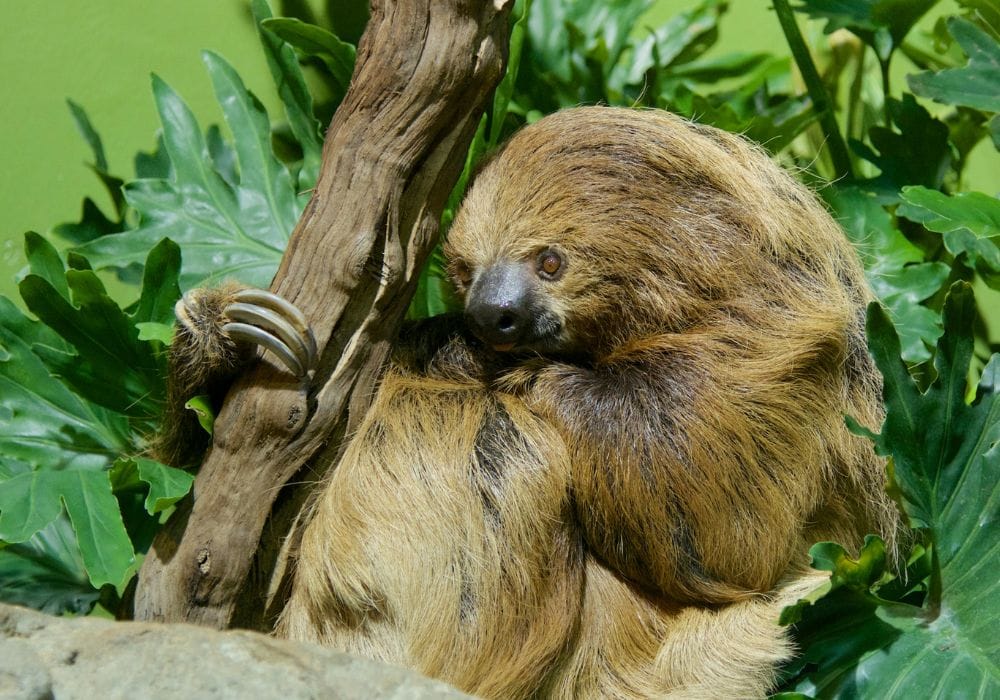
– Notable encounters: Spotting a two-toed sloth can be a highlight of any visit to Corcovado National Park. They are quite common, but as they are nocturnal, they are harder to watch; plus in the Corcovado National Park you will find them usually up on the canopy of the rainforest.
6. Three-toed Sloths
Three-toed sloths are similar to their two-toed counterparts but have three claws on their forelimbs. They are equally slow-moving and spend most of their time in the treetops, feeding on leaves.
– Best places to spot them: Look for three-toed sloths in the same habitats as two-toed sloths, often in areas with tall trees and dense foliage. They are most active during the early morning and late afternoon.
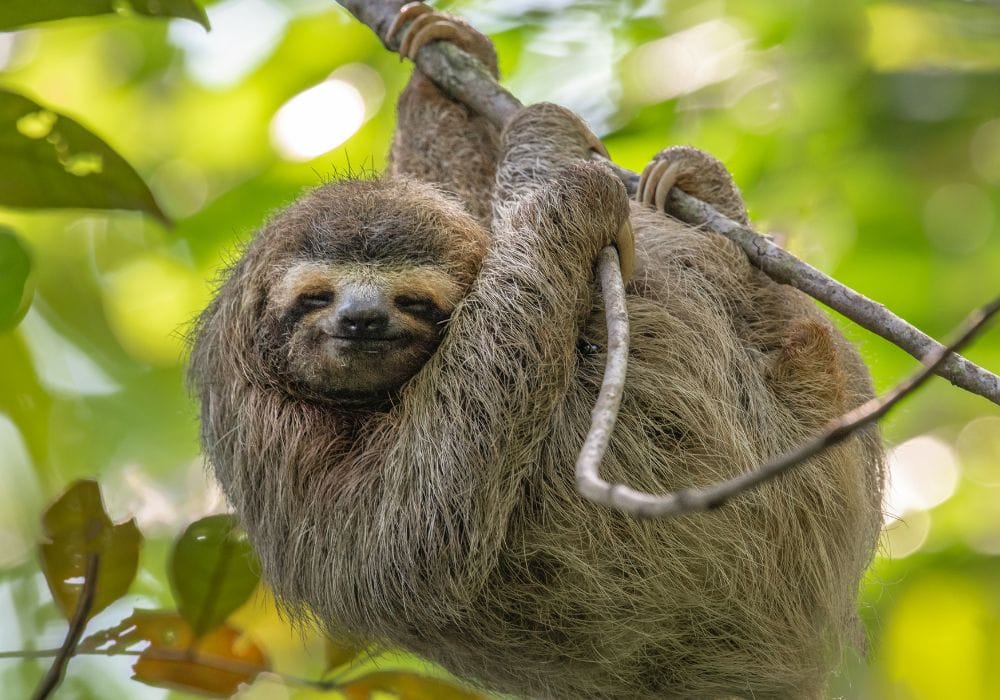
– Memorable sightings: Visitors often find the sight of a three-toed sloth hanging from a tree branch by the road can be a charming and unforgettable experience.
7. Green Iguanas
Green iguanas are large, herbivorous lizards known for their distinctive appearance and impressive size. They are often seen basking in the sun or perched on tree branches near water sources.
– Viewing tips: To spot green iguanas, look for sunny areas along riverbanks and in open clearings. They are most active during the daytime, making them relatively easy to observe.
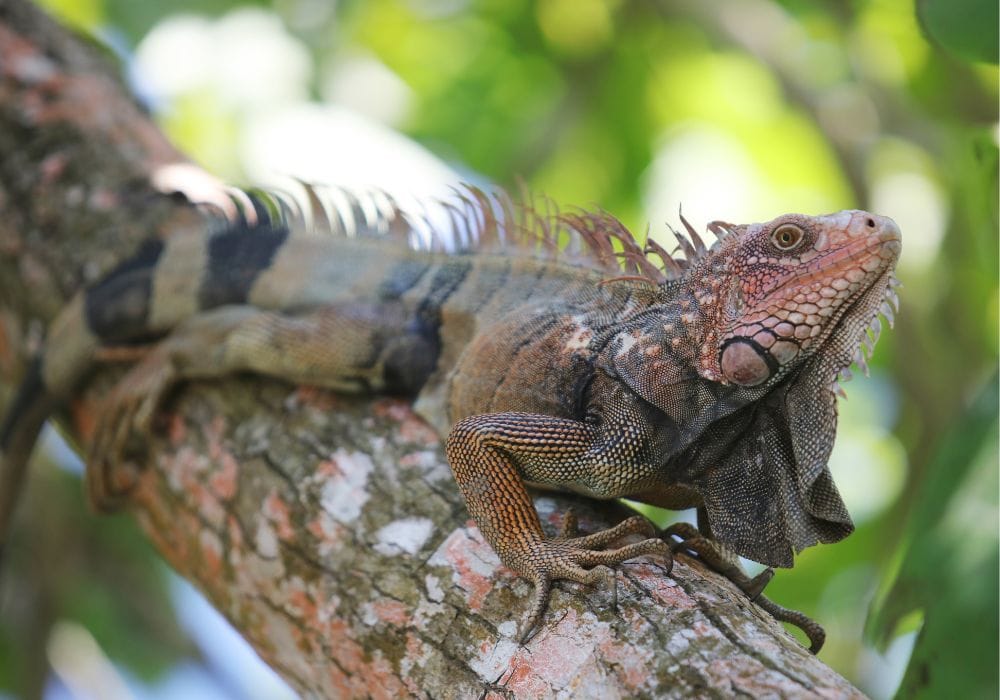
– Visitor stories: Many visitors enjoy the huge orange-colored male green iguanas and sharing their sightings with friends and family.
8. Black Iguanas
Black iguanas, also known as black spiny-tailed iguanas, are another common reptile species in Corcovado National Park wildlife. They are known for their dark coloration and spiky tails.
– Common areas for sightings: Black iguanas are often found in rocky areas and open clearings. They are also known to bask in the sun on tree branches and rocks.
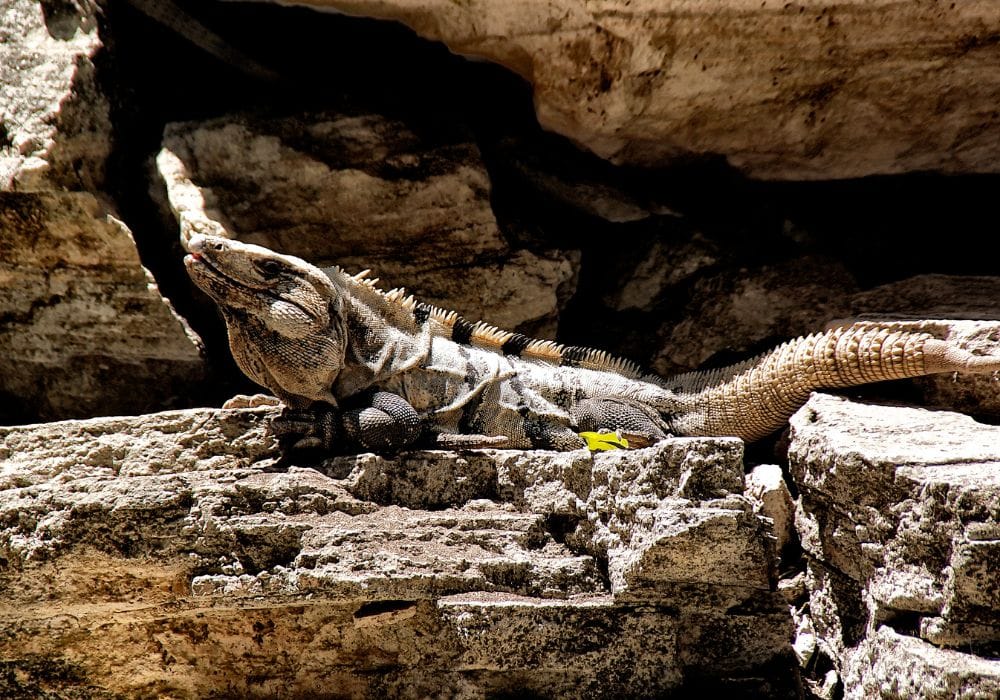
– Interesting encounters: Observing black iguanas can be a thrilling experience, especially when they display their impressive spines and agile movements.
9. Scarlet Macaws
Scarlet macaws are one of the most visually striking birds in Corcovado National Park, with their vibrant red, blue, and yellow plumage. These large parrots are known for their loud calls and strong pair bonds.
– Where and when to see them: Scarlet macaws are often seen flying in pairs or small groups near the park’s coastline and riverbanks. Early morning and late afternoon are the best times to spot them.
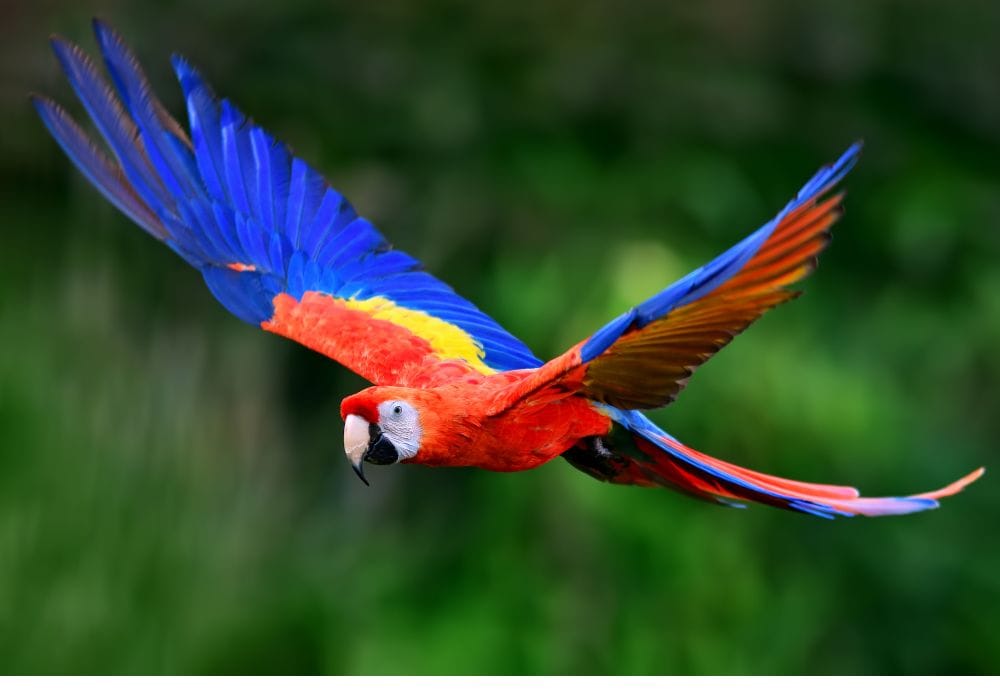
– Conservation efforts and stories:
Conservation programs in Corcovado National Park have been successful in protecting scarlet macaws. Guides often share stories of the efforts to preserve these magnificent birds.
10. Boa Constrictors
Boa constrictors are large, non-venomous snakes known for their powerful constriction abilities. They are often found in trees and near water sources, where they hunt for small mammals and birds.
– Safety tips for encounters: While boa constrictors are generally not dangerous to humans, it’s important to observe them from a safe distance. Guides can provide valuable tips on how to safely encounter these impressive snakes.
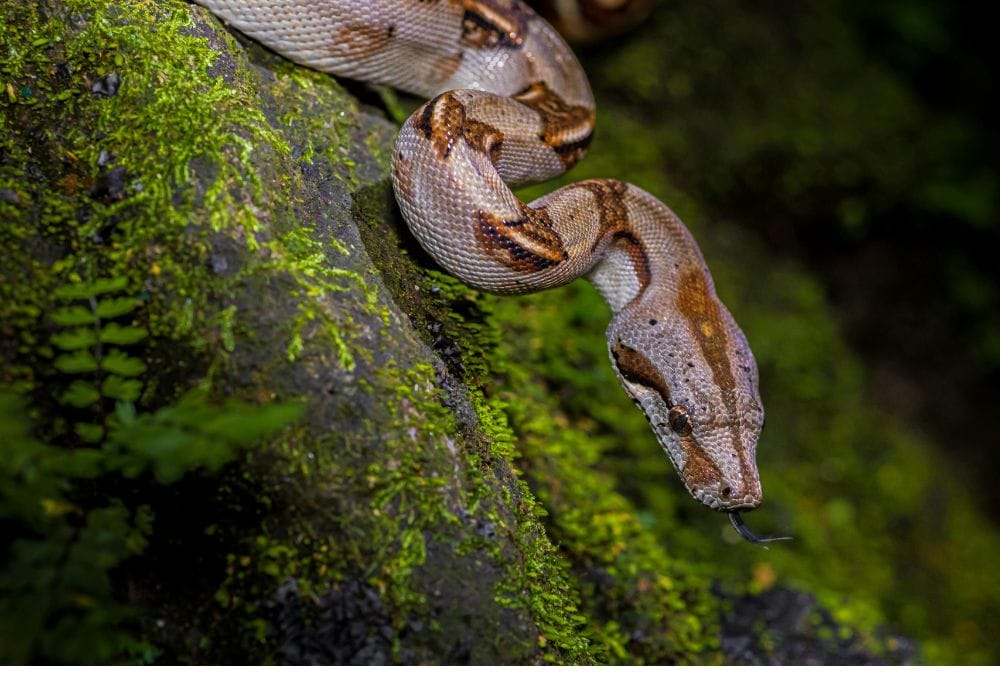
– Memorable sightings: Spotting a boa constrictor in the wild can be an exciting experience. Visitors often marvel at their size and strength.
11. Eyelash Vipers
Eyelash vipers are small, venomous snakes with distinctive “eyelash” scales above their eyes. They are often found in trees and shrubs, where they wait to ambush their prey.
– Distinctive features and habitats: Eyelash vipers come in various colors, including green, yellow, and red. They are often seen in areas with dense vegetation and flowers.
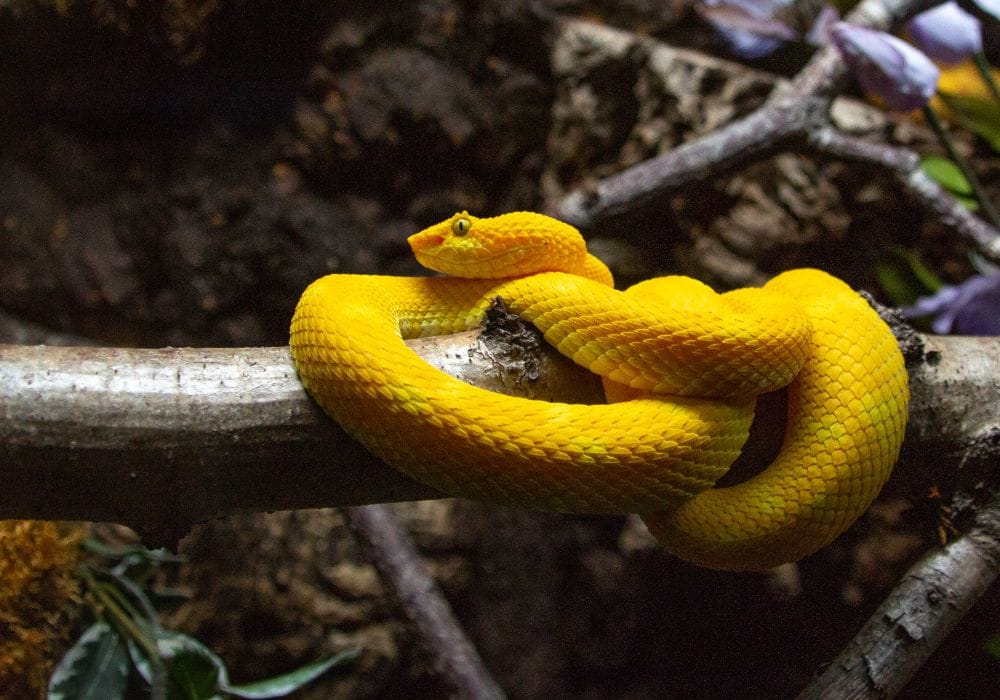
– How to safely observe them: It’s important to maintain a safe distance when observing eyelash vipers. They love the buttress roots of the big trees. Guides can help visitors spot these elusive snakes while ensuring their safety.
12. Spotted Dolphins
Spotted dolphins are playful and acrobatic marine mammals often seen off the coast of Corcovado National Park. They are known for their distinctive spotted patterns and energetic behavior.
– Best times for dolphin watching: The best times to spot spotted dolphins are during boat tours along the coast. Early morning and late afternoon are ideal for dolphin-watching excursions.

– Tour experiences: Many visitors enjoy the thrill of watching spotted dolphins leap and play in the water, following the boat that takes you to the Corcovado National Park, creating unforgettable memories.
13. Bottlenose Dolphins
Bottlenose dolphins are another common marine species found in the waters around Corcovado National Park. They are known for their intelligence and friendly nature.
– Tips for spotting them: Bottlenose dolphins are often seen swimming near the coast and in shallow waters. Boat tours provide excellent opportunities to observe them up close.
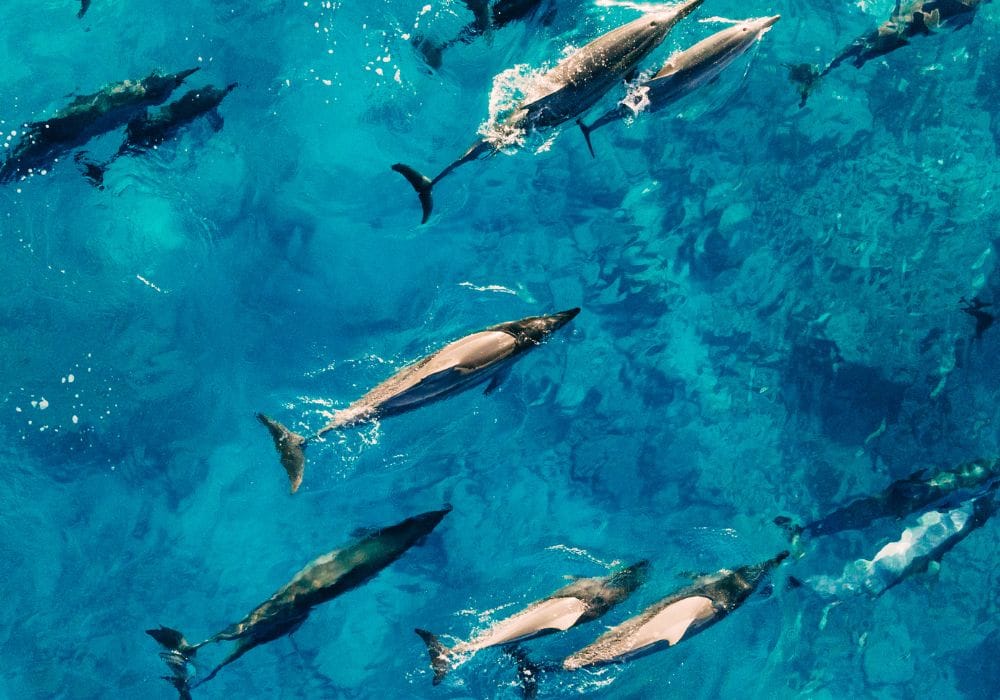
– Visitor stories: Interacting with bottlenose dolphins is a highlight for many visitors, as these friendly creatures often approach boats and put on a natural show.
The following are the Corcovado National Park wildlife encounters that usually don’t happen but are great gifts when they happen.
14. Humpback Whales (Seasonal)
Humpback whales are majestic marine mammals that migrate to the warm waters off the coast of Costa Rica during the breeding season. Their impressive size and acrobatic displays make whale watching an unforgettable experience.
– When and where to see them: The best time to see humpback whales is during their breeding season, which typically occurs from July to October and December to March. Whale-watching tours from Corcovado National Park offer excellent opportunities to observe these giants.
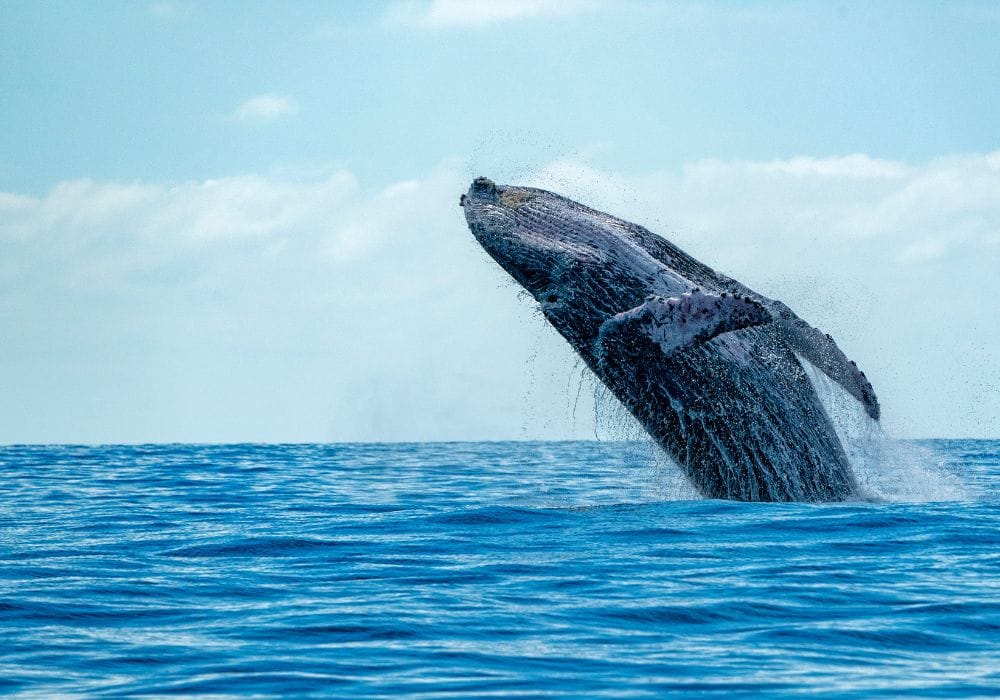
– Majestic whale watching experiences: Witnessing humpback whales breaching and tail-slapping is a breathtaking sight. Conservation efforts are in place to protect these magnificent creatures, and guides often share insights into their behaviors and migratory patterns.
15. Baird’s Tapir (Exceptional Encounter)
Baird’s tapirs are elusive and rare mammals that are considered a special sighting in Corcovado National Park. These herbivorous creatures are known for their distinctive appearance, with a short trunk-like nose and stocky body.
– Description and rarity: Baird’s tapirs are the largest land mammals in Central America and are listed as endangered due to habitat loss and hunting. Spotting one in the wild is a rare and thrilling experience.

– Stories from those who have seen one: Visitors who are lucky enough to encounter a Baird’s tapir often describe it as a highlight of their trip. Guides share anecdotes of these encounters, emphasizing the importance of conservation efforts to protect this species.
16. Puma (Exceptional Encounter)
Pumas, also known as cougars or mountain lions, are elusive predators that inhabit the forests of Corcovado National Park. These solitary and stealthy cats are rarely seen but leave a lasting impression when encountered.
– Characteristics and rarity: Pumas are powerful and agile hunters, known for their ability to adapt to various habitats. Spotting a puma is a rare event, making it an exceptional wildlife encounter.
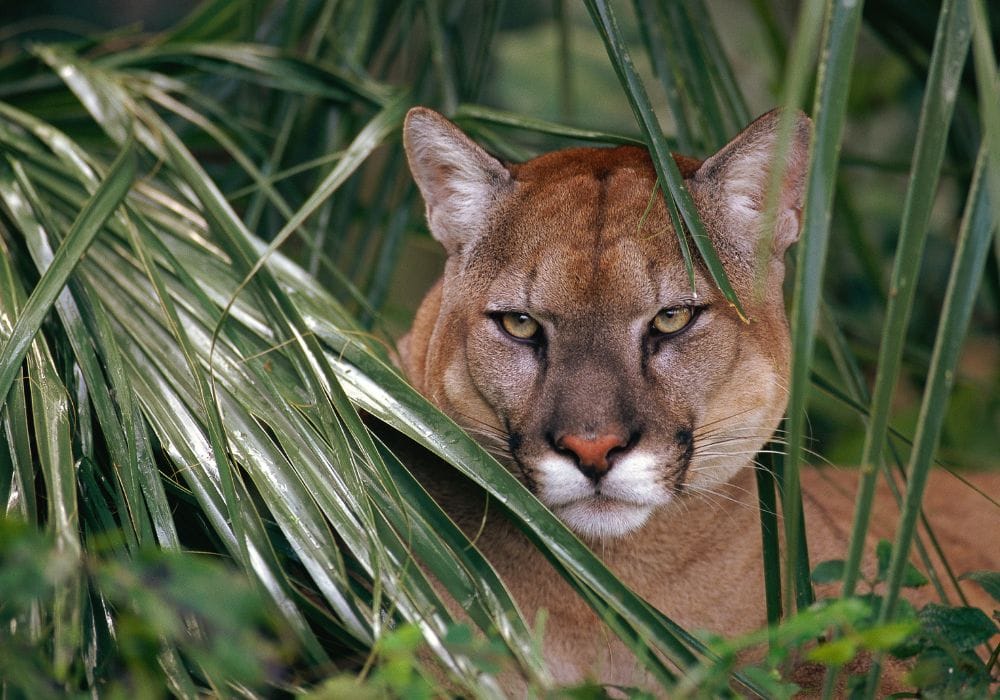
– Anecdotes from lucky encounters: Guides often share stories of their rare sightings of pumas, and you may find them in many videos in social media, providing insights into the behavior and ecology of these elusive predators. Safety tips are also emphasized to ensure a safe and respectful observation.
17. Jaguar (Exceptional Encounter)
Jaguars are the largest cats in the Americas and are known for their majestic and elusive nature. These apex predators are a symbol of the wild beauty of Corcovado National Park.
– Majestic and elusive nature: Jaguars are solitary and territorial, often preferring dense forests and riverine habitats. They are highly skilled hunters, known for their powerful build and distinctive rosette-patterned coat.
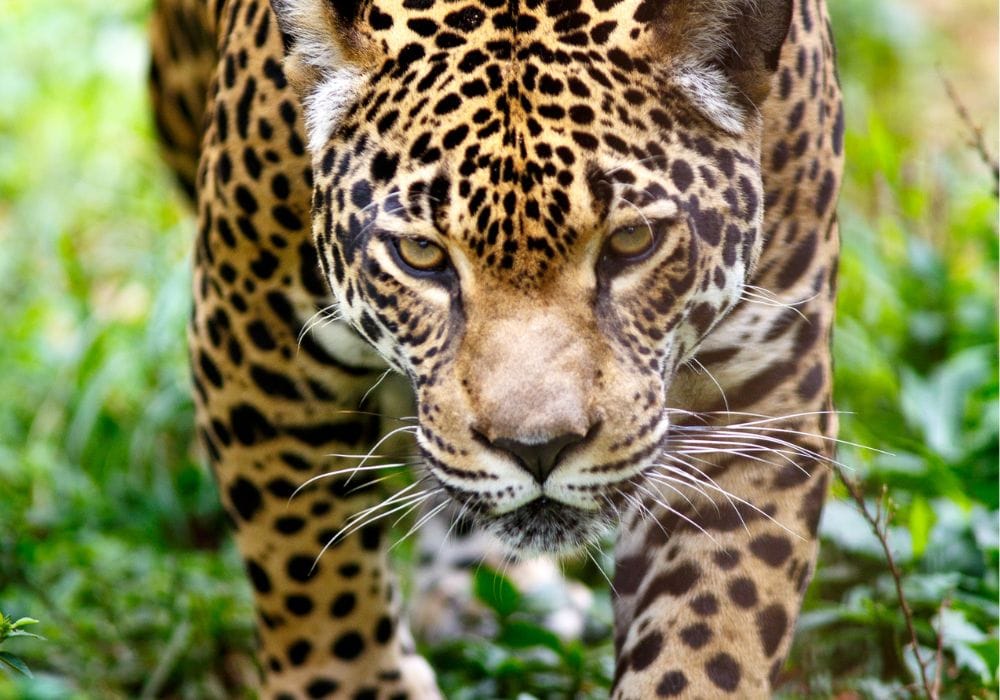
– Stories from rare sightings: Encountering a jaguar in the wild is an extraordinary event. Guides share tales of these rare sightings, highlighting the importance of jaguar conservation to protect their habitats and ensure their survival.
Additional Tips
– General tips for wildlife spotting in Corcovado: Be patient, move quietly, and stay observant. Early morning and late afternoon are the best times for wildlife activity.
– Importance of respect and safety: Always maintain a safe distance from wildlife, follow the guidance of your tour guide, and never feed or disturb animals.
– Recommendations for best times and guides: Choose experienced guides who are knowledgeable about the park’s wildlife and habitats. Plan your visit during the dry season for optimal wildlife viewing conditions.
Conclusion
Exploring Corcovado National Park offers a unique opportunity to encounter some of the most remarkable wildlife on the planet. From the loud calls of howler monkeys to the majestic presence of jaguars, each encounter provides a glimpse into the incredible biodiversity of this pristine rainforest. By supporting wildlife conservation efforts and respecting the natural habitat of these creatures, visitors can help ensure that future generations will also have the chance to experience the wonders of Corcovado National Park.
Epic Adventures Costa Rica provides a range of tours designed to suit every nature enthusiast’s needs. Whether you’re looking for an immersive multi-day expedition or a quick but impactful day trip, there is a perfect option for you.
One of the standout experiences is the One-Day Tour from Manuel Antonio to Corcovado National Park. This tour offers an incredible opportunity to explore the park’s lush landscapes and encounter its diverse wildlife, all within a single day. Starting from Manuel Antonio, you’ll journey to the heart of Corcovado, guided by experienced naturalists who share their extensive knowledge of the park’s flora and fauna. Along the way, you’ll have the chance to spot iconic species such as howler monkeys, scarlet macaws, and, if you’re lucky, the elusive jaguar.
The guided tour ensures that you make the most of your time in the park, with expert tips on the best wildlife spotting locations and insights into the park’s conservation efforts. Each tour is designed to maximize your wildlife viewing opportunities while ensuring minimal impact on the natural environment.
Book a tour with Epic Adventures Costa Rica and embark on an unforgettable journey through this extraordinary wilderness, witnessing the magic of Corcovado National Park firsthand.